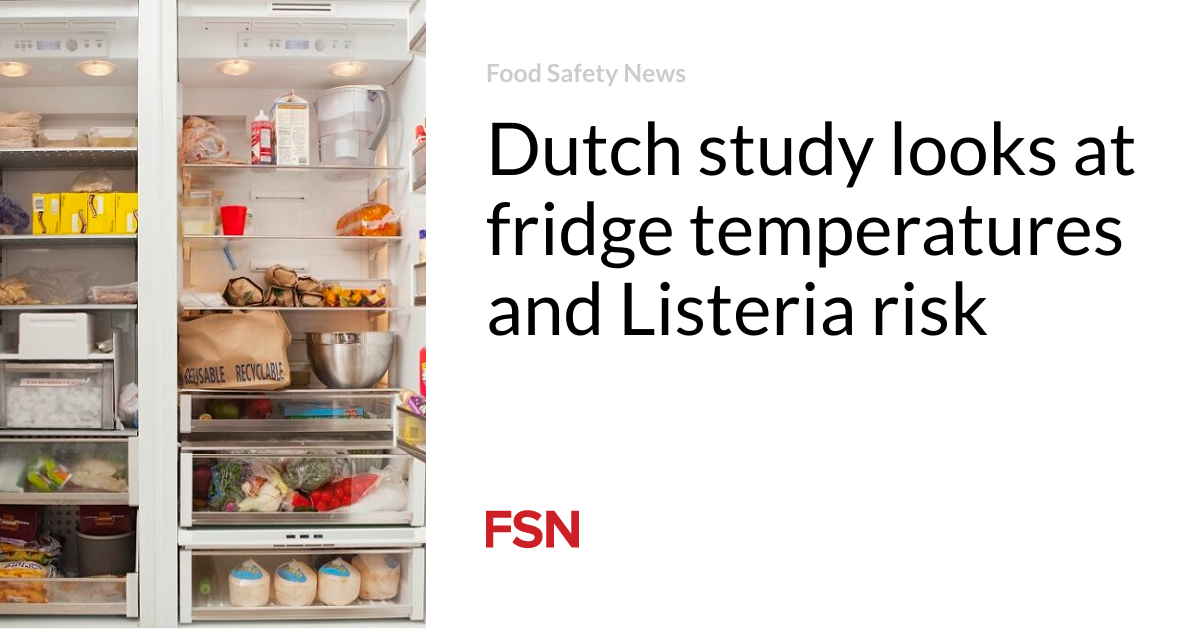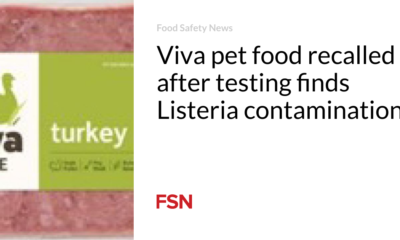Food
Dutch research looks at refrigerator temperatures and Listeria risk

Higher refrigerator temperatures in the homes of the elderly may pose a greater risk of Listeria infection, according to a study.
Researchers looked at the temperatures of household refrigerators in the Netherlands and the impact on cases of listeriosis related to ready-to-eat (RTE) cooked meat products.
A survey among 1,020 Dutch consumers mapped out their knowledge and behavior regarding refrigerators.
The average temperature of 534 bottom-shelf household refrigerators was 5.7 degrees C (42.2 degrees F). The 24-hour profiles of another 50 refrigerators showed that temperatures on the top shelf were higher, at 7.7 degrees C (45.8 degrees F). In the Netherlands it is recommended that the temperature of refrigerators is 4 degrees C (39.2 degrees F).
The results of the study were used to estimate the number of cases of listeriosis per year due to the consumption of RTE cooked meat products among different population risk groups.
Refrigerator temperature findings
The analysis of the measured temperatures of 534 bottom shelf refrigerators found that they ranged from -1 degrees C to 17 degrees C (30.2 to 62.6 degrees F), with two-thirds 6 degrees C (42.8 degrees F). ) or lower, according to the study published in the International Journal of Food Microbiology.
The survey found that only 28 percent of consumers said 4 degrees C (39.2 degrees F) is the right temperature for a refrigerator. About 8 percent indicated a lower temperature; the same amount indicated 8 degrees C (46.4 degrees F). People who were familiar with the recommended setting had a significantly lower temperature in the refrigerator.
Most participants never checked the temperature of the refrigerator; 37 percent did it occasionally, and 2 percent did it regularly.
The measured temperatures of the refrigerators of consumers aged 65 and over were on average higher than those of people under 35. Younger consumers were more aware of the recommended temperature. Refrigerators with the highest temperatures of 16 and 17 degrees C (60.8 and 62.6 degrees F) were owned by participants aged 79 and 86. The type and age of the refrigerator had no significant influence on the temperature.
The study found that two-thirds of participants kept meat products on the bottom or middle shelf. The general advice is to store RTE cooked meat products on these two shelves.
Impact on Listeria risk
Modeling predicted an average number of 191 diseases per year from the consumption of RTE cooked meat products. As expected, the at-risk populations had a higher risk of listeriosis.
Storing opened RTE-cooked meat products at home for less than 7 days or at temperatures below 7 degrees C (44.6 degrees F) resulted in a significant reduction in the number of predicted cases of illness, scientists said.
An analysis was performed on the impact of different variables on the estimated risk of listeriosis in RTE-cooked meat products. The results showed that consumer behavior such as shortening storage time and controlling the refrigerator temperature at home can significantly reduce the risk.
Scientists say that despite recommendations included in numerous food safety campaigns aimed at consumers, the storage temperature of refrigerated foods often exceeds 6 degrees C (42.8 degrees F). Contributing factors include a lack of perceived importance or risk management benefit.
“Our research showed that the more extreme storage conditions were found in older people’s refrigerators, and this indicates the need for more targeted communication about good storage practices that can be implemented in the home kitchen,” researchers said.
“Specific advice can be given to older people, such as setting a maximum temperature for the refrigerator at home, storing ready-to-eat meat products on the bottom or middle shelf and consuming them within two to three days of opening.”
(To sign up for a free subscription to Food Safety News, click here.)











